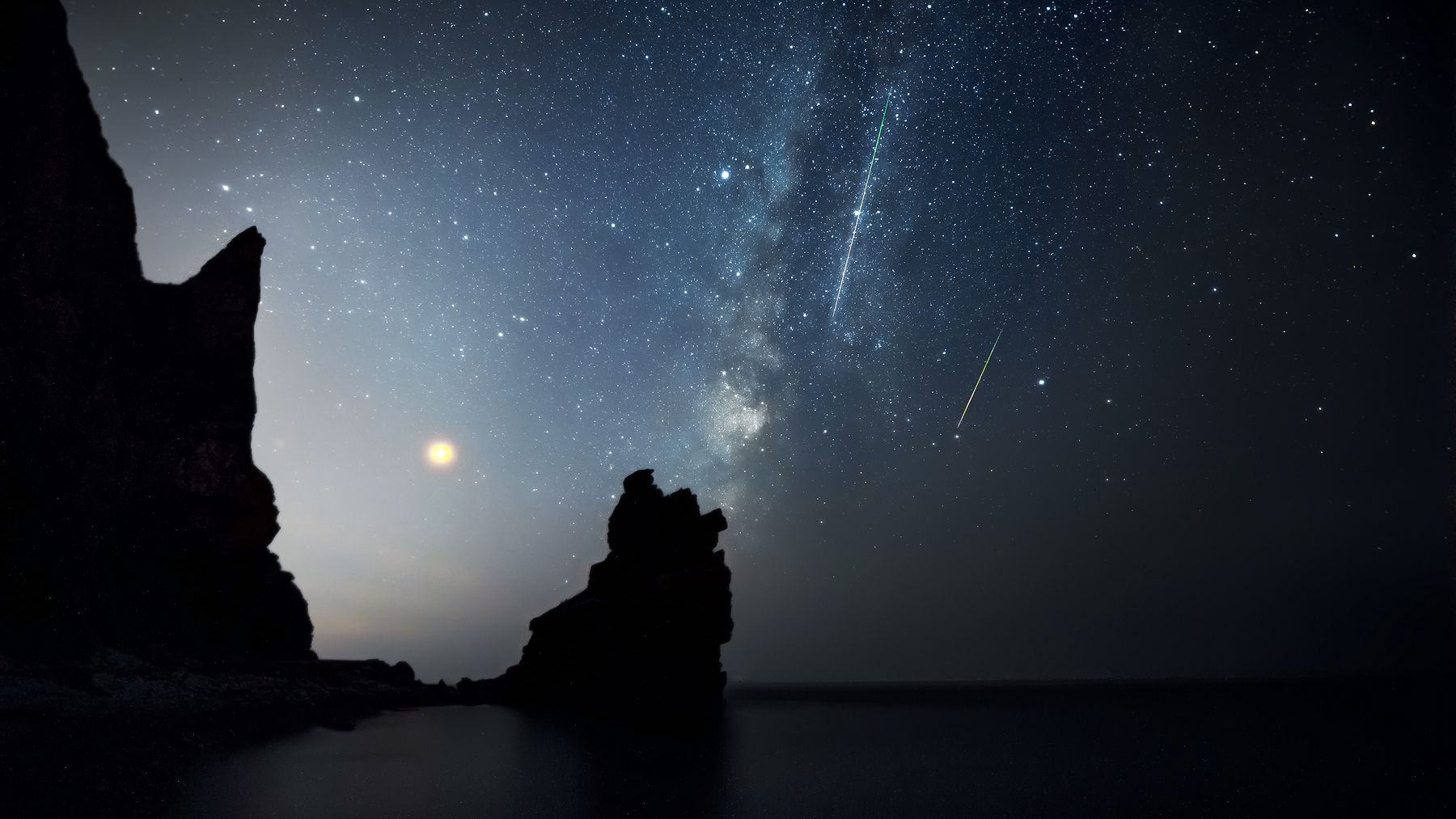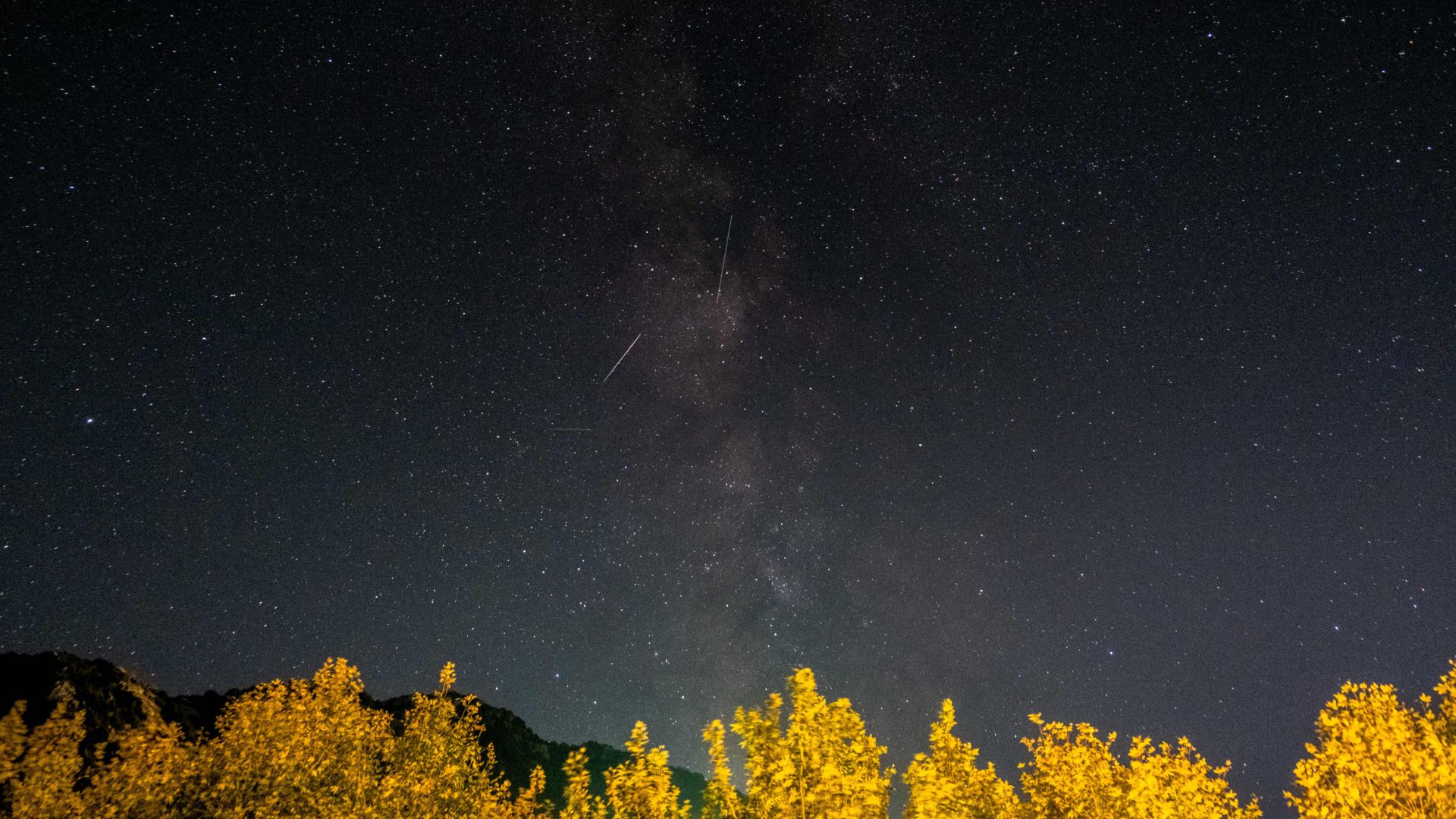Key Points
- The Orionids meteor shower is active from October 2 to November 7, with peak viewing on the night of October 22, coinciding with the new moon for optimal dark skies.
- The meteors come from debris of Halley’s Comet, traveling at about 41 miles per second, often leaving glowing trails and occasionally forming fireballs.
- For the best view, head to a dark area after midnight, let your eyes adjust for 30 minutes, and look 45 to 90 degrees away from Orion’s bright star Betelgeuse.
This month, skywatchers will be able to catch an out-of-this-world light show. The Orionids meteor shower is active from October 2 to November 7, with its peak occurring on the night of October 22, according to NASA.
Meteor showers are produced when pieces of comet debris heat up and burn as they enter the Earth’s atmosphere at extremely high speeds, resulting in bright bursts of light streaking across the sky, per NASA. The Orionids are linked to the debris from Halley’s Comet and occur every autumn.
Orionid meteors are known for their brightness and speed. According to NASA, they travel at about 41 miles per second into the Earth’s atmosphere and leave behind glowing “trains” (incandescent bits of debris), which last for several seconds to minutes. Fast meteors can also sometimes become fireballs. Expect about five to six meteors per hour during this month’s Orionid meteor shower.
To see the celestial event, find an area away from light pollution after midnight and lie flat on your back with your feet facing southeast if you are in the Northern Hemisphere, or northeast if you are in the Southern Hemisphere. It takes about 30 minutes for your eyes to adjust to the dark. The show will last until dawn.
The radiant (the area of the sky where meteors appear to shoot from) of the Orionids is just to the north of the constellation Orion’s bright star Betelgeuse, according to NASA. For the best view of the Orionids, look 45 to 90 degrees away from the radiant. The meteors will appear longer and more spectacular from this perspective.
NASA predicts the peak will occur on October 22. According to the American Meteor Society, this coincides with the new moon, providing ideal dark skies for viewing. Showers that peak when the moon’s phase is greater than one-half illuminated (e.g., first quarter to last quarter) are more difficult to observe because of moonlight.
You can also keep track of meteor activity by visiting the NASA Meteor Shower Portal. The colored dots indicate shower meteors.
Source link


